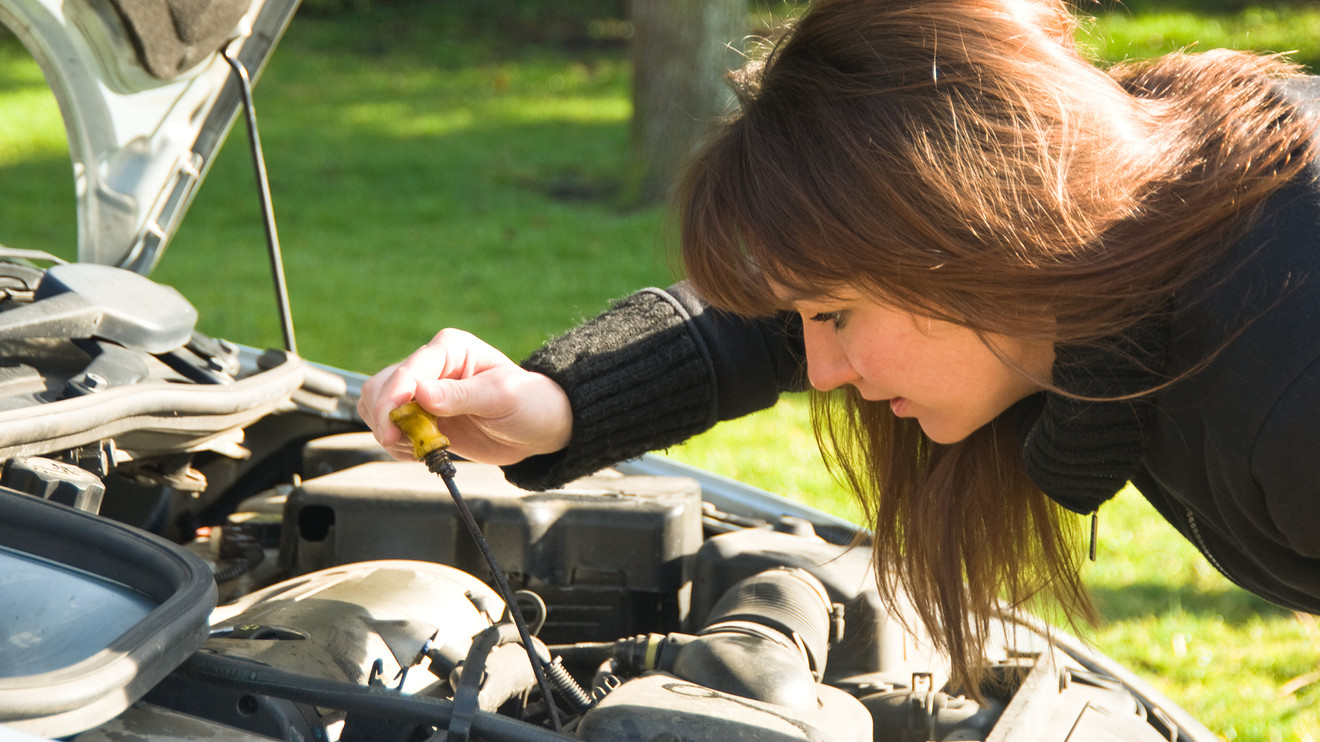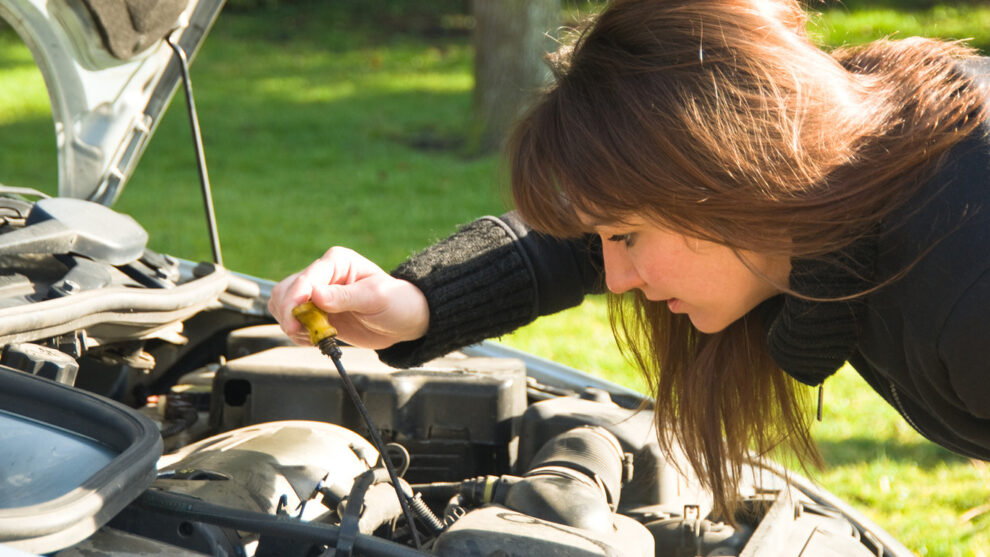
Your vehicle has an amazing array of parts that work in harmony to deliver you where you need to go. Along with the key components such as your engine, transmission, and transaxle, there are supporting pieces that need your attention regularly. To overlook regular maintenance of your vehicle’s critical systems will cost you lots of money, waste your time, and could jeopardize your safety.
But not all the maintenance items listed in your owner’s manual need equal attention. “Service Engine Soon” lights mean you need to take note. Other warning lights demand immediate attention. Should the oil “lamp” illuminate on your instrument panel, it’s time to immediately stop the vehicle and seek assistance. To continue driving could cause catastrophic engine damage. Here’s a guide to what service items require attention and how often.
Regularly inspect:
Belts and hoses
Rubber wears out. Hoses are constantly heating and cooling, expanding and contracting with every trip you make. Your belts experience a similar life, but even more so since they’re stretched to the limit driving the accessories that make your engine operate properly. Over time these parts will tend to crack and ultimately fail.
As a quick test, hoses should feel hard when squeezed (make sure the engine is cool). If they’re soft or show any cracks in the rubber, replace them immediately. Belts will also show aging over time with cracks or missing ribs on the inside surface. In these cases, replacement is recommended.
Also read: Beware of these hidden hazards that can increase the cost of your homeowners insurance
If everything looks good after your inspection, set up your system to swap them out every 80,000 miles or six years, regardless. That’s a good lifespan for these parts.
Mufflers and exhaust components
Today’s vehicles use stainless-steel exhaust parts, meaning they last a lot longer than your father’s muffler. While your exhaust system may turn brown due to the environment, it’s surface corrosion and probably won’t need your attention.
If you hear a ticking noise coming from under the vehicle, it’s time for an inspection. This could be a sign of a cracked exhaust manifold (if coming from the engine area) or a hole in the muffler or exhaust tubing.
A qualified technician needs to weld these types of exhaust leaks shut. While catalytic converters can become plugged over time and reduce vehicle performance, the manufacturer guarantees them for a minimum of 80,000 miles and rarely go bad. If you notice a reduction in engine power with no other obvious issues, it could be a plugged converter.
Struts and shock absorbers
Shocks and struts can wear out over time. When they wear excessively, they can cause loss of vehicle steering control when negotiating dips and rises in the road. Not to worry, most shocks and struts will deliver four to six years’ solid service. If you have your car serviced for an oil change or tire rotation, visually checking these parts for leaks or damage should be just a part of the inspection process.
Fluid leaks
Always look around your vehicles for signs of fluid leaks. The color of the fluid, green, red, or black can help determine the level of the problem. But some leaks are not the end of the world. Red fluid leaks in the middle of your vehicle generally signal transmission woes and require immediate attention since low fluid levels can lead to failure of a very expensive component.
Also on MarketWatch: Power companies in many states are allowed to cut service again — how to keep the heat on this winter if you’re still cash-strapped
If your vehicle is older, brown drips can come from leaky engine main seals or valve cover gaskets. These are generally not a huge issue unless your engine drops below the proper operating level as noted on the engine’s dipstick. Green liquid (Toyota uses red) coolant is a big deal because you could overheat if the level runs low. In any event, regularly check your fluids to ensure they are topped off.
Annual inspection items:
Constant velocity joints
Commonly called CV joints, these marvels of engineering allow the transaxle to transfer engine power to the wheels/tires on your vehicle while negotiating irregularities in the road. These units feature a U-joint style of coupling on each side of the transaxle protected by a rubber boot to retain lubrication and keep harmful road dirt out.
Read: 10 SUVs that are really fun to drive
If these joints leak or make a grinding noise, replace them. The best thing you can do here to avoid failure is make sure the protective boots are in good condition. Like a guard standing watch, once the boots tear or crack, they need replacement. Check them once a year and have them replaced every four years, regardless.
Brakes
Without properly working brakes, your driving experience can be far more exciting — in a bad way. Most brakes will last at least 30,000 miles or three years, but that depends on the way you drive. Stop and go city driving will increase brake wear while highway driving could give you five or even seven years between brake jobs. Today, the best thing about brakes is that they tell you when they need attention. Modern-day brake linings feature a sensor that emits a scratching noise that will signal the need for brake pad replacement.
Steering
Steering system issues are rare these days. If you or your mechanic check the power steering fluid reservoir regularly, you should be fine. If your vehicle steers left or right, it’s usually something else like alignment or suspension wear. Common culprits are worn ball joints, Pitman or idler arms, tie rod ends, or simply alignment. Uneven tire wear usually indicates an alignment or suspension problem.
Recommended:5 important facts about car insurance no one ever tells you
Timing belts
Like the belts that drive your engine’s accessories, timing belts can wear and stretch over time. Timing belts are extremely important because they keep your engine’s valve opening at exactly the right moment in time with your engine’s crankshaft. If the belt slips or fails, the valves will contact your pistons, and it’s new engine time. Follow the advised replacement times for these belts to the letter.
Water pumps
The water pump pushes the coolant through the engine and radiator, keeping things cool. Water pumps can wear with age, and if they fail, your engine will overheat. Changing your coolant every three years or 40,000 miles will help the water pump live longer because coolant manufacturers incorporate lubricants and rust inhibitors into new coolant. If your car overheats and there are no leaks or obvious failures, the water pump could be a place to look.
Read next: The 15 best compact SUVs—and they’re priced right, too
This story originally ran on Autotrader.com.








